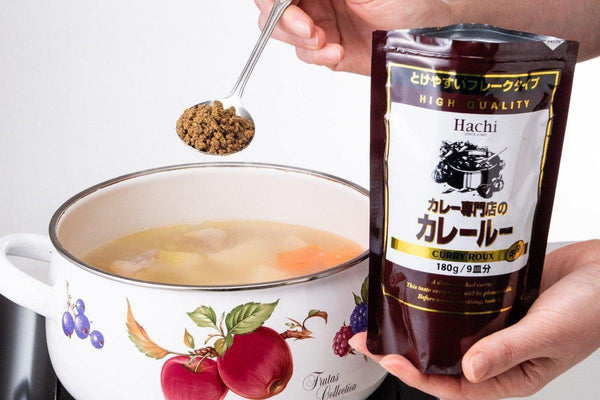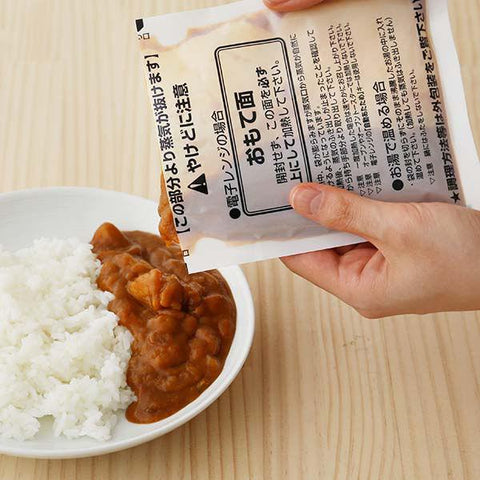
Jump to:
Japanese curry is one of Japan’s most loved everyday foods and is as commonly eaten today as dishes like ramen noodles or nabe (hotpot). Unlike its Asian counterparts which tend to be much spicier in taste, Japanese curry is milder and sweeter, and has been tailored to better suit the Japanese palate.
The origins of curry in Japan can be traced to the Meiji era of the late 1800s, where it is believed to have initially been introduced to the Japanese by the British. Supposedly, a shipwrecked British sailor was picked up by a Japanese fishing boat, bringing a British version of the Indian dish with him. This British version of curry was more suited to European tastes, was sweeter than traditional Indian curry, and different in color.
Over the next 150 years, the Japanese adapted the curry further to suit their tastes, resulting in a rich variety of different flavors and spice levels available to try today, whilst popular curry chain restaurants such as CoCo Ichibanya can be found in virtually every town and city in Japan.
Forms of Japanese Curry
Japanese curry comes in several different forms, the most popular kinds being curry roux and ready-made pouches of sauce, in addition to flakes and powders.
Curry roux
Curry roux (taken from the French cooking term roux) is mostly found on Japanese supermarket shelves in bars or blocks of cubes that can be broken off into sections, similar in appearance to a chocolate bar from the outside. Curry roux’s ingredients usually consists of a mixture of flour, fats and oils, curry powder, spices, and seasonings. These blocks are then boiled in a pan with water to create a thick curry sauce.

Curry flakes
Less common than curry roux but still readily available to buy are Japanese curry flakes. Top Japanese food brand S&B Foods, famous for their Golden Curry range, sell a Japanese curry flake mix in addition to their roux products. According to the manufacturer, curry flakes are easier to adjust the serving quantity and dissolve more quickly when mixed with soup stock or hot water. These curry flakes’ ingredients include wheat flour, curry powder, pepper, vegetable oils, chili pepper, salt, and sauteed onion.

Retort pouches
Retort or ready-made pouches are purchased in airtight bags and then pressure-heat sterilized once sealed, allowing the food quality to remain unaffected by sunlight or decay from microorganisms. They can be stored for long periods of time at room temperature too. Extremely simple and quick to prepare, these plastic pouches are placed into a pan of boiling water for three minutes before pouring over rice.
Boil-in-the-bag curry, known as retoruto kare in Japanese, was first introduced in Japan in 1968 when Otsuka Foods Co. launched their Bon Curry pouch range after one of their product developers was inspired by reading an article about pouch sausages used by the Swedish army. After developing the heat resistant bags, by 1973, Otsuka Foods was selling around 100 million packets of Bon Curry per year.

Japanese ready-made curry pouches usually contain vegetables such as potatoes, carrots, and onion in addition to the curry sauce so it can be served straight with rice or noodles, without needing to add additional ingredients.
What is Japanese curry sauce made of and how does it taste?
Japanese curry is relatively mild compared to its Asian counterparts because it is made of an harmonious blend of curry powder and spices in which no particular ingredient stands out. Slightly sweet ingredients such as sautéed onions, grated apples, carrots or honey are also usually added to add sweetness and umami.
The spicy taste of curry comes from spices like pepper, chili pepper, ginger, etc. This sharp taste provided by these spices is different from the pungent flavor of salt.
Is Japanese curry salty?
The amount of salt found in Japanese curry tends to vary depending on the brand and type of product. As a general guideline, we can compare the amount of salt found in curry products to the recommended daily allowance.
According to the World Health Organization (WHO), adults should try to consume less than 5 grams of salt per day. When looking at the content in curry roux from manufacturers such as S&B Foods, the amount of salt is listed at around 10%.
This is equal to approximately 1.8 to 2 grams per serving, so fairly low compared to other foods and under the daily recommended allowance.
Is Japanese curry healthy?
Depending on what kind of Japanese curry is being consumed and which ingredients are added to it, the nutritional benefits are varied, however curry roux is generally high in calories, carbohydrates, sugar, and fats, making it best eaten as an occasional treat if you are on a strict diet or trying to lose weight.

There are always ways to make healthier versions of dishes and Japanese curry is no exception. For example, instead of using curry roux, you could make your own healthier curry sauce using a product like S&B’s curry powder instead which contains zero grams of fat and sugar per serving.
How does Japanese curry taste and is it spicy?
The main difference between Japanese curry and Indian curry is that Japanese curry usually tastes a lot milder and sweeter, and the base is thick and brown. Very spicy flavors that you would typically find in other Asian countries such as Thailand or Malaysia are not common in Japanese dishes so most curry here is very mild in comparison. Unlike Thai and Indian curries that come in a variety of bases and colors, Japanese curry is usually made from the same base.
What are the most popular Japanese curry dishes?
Although Japanese curry can be served in a variety of different forms, some of the most popular Japanese curry dishes include curry and rice (kare raisu), katsu curry, curry udon, and curry pan.
Japanese curry and rice (kare raisu)
The original Japanese curry dish, recipes for curry and rice began to appear in Japanese cookbooks and on restaurant menus as early as the 1800s. Usually eaten with a spoon instead of chopsticks due to the liquid nature of the curry sauce, the curry mix is poured over short-grain sticky rice and usually contains vegetables such as carrot, potato, and onion. Other popular ingredients include root vegetables such as sweet potato, squash, and pumpkin and meat such as chicken or beef can also be added to the sauce. Curry and rice is usually served with a garnish of pickles such as rakkyo or fukujinzuke.

Katsu curry
Another popular curry dish, katsu curry, includes the addition of a fried meat cutlet to the curry sauce and rice. Similar to a German schnitzel, katsu cutlets are usually made from chicken or pork, although beef cutlets are also common in the Kansai area. It is not known exactly how katsu curry came to exist, but one story claims that it originated in Tokyo after a professional baseball player for the Yomiuri Giants started asking for a tonkatsu placed on top of his curry in a local western style restaurant in Ginza.

Curry udon
Originating in Tokyo during the Meiji period, it is believed that curry udon first appeared in 1904 at a noodle restaurant in Tokyo, where it began to gain popularity among Waseda University students. Curry udon is a noodle dish made by either adding curry powder to a soup broth or by diluting curry sauce with soup broth. A popular menu item found in most udon noodle restaurants, different versions of the dish such as curry udon with cheese are also commonly eaten these days. The balance of the thick salty noodles with the curry sauce makes for a delicious if somewhat messy meal!

Curry pan
Curry or kare pan are crispy bread rolls with a fluffy inside containing a curry filling, similar in texture to a doughnut. A popular snack among students and adults, you can find curry pan in convenience stores around Japan. The name ‘kare pan’ comes from the Japanese word for curry and ‘pan’, adapted from the French word ‘le pain’ for bread.

Kare pan is said to have been invented at a bakery called Cattlea in the Morishita area of Tokyo during the 1920s. If you are ever visiting Tokyo, you can still visit the bakery today and try their old-fashioned kare pan that has used the same recipe for almost 100 years.
What kinds of Japanese curry are there?
In addition to the traditional thick, brown Japanese curry sauce, there are many other varieties and flavors to try if you are feeling adventurous. For example, dishes such as Japanese hamburger steak with curry sauce, and baked or yaki curry gratin from Kyushu are also popular ways to eat Japanese curry. There are even Japanese black curries which include ingredients such as edible bamboo charcoal powder or squid ink to create its dark color. Popular curry manufacturers such as S&B Foods produce curry roux with different spice levels ranging from mild to extra hot so you can easily experiment and find the right flavor to suit your personal taste.

How to make Japanese curry
Making a basic Japanese curry using curry roux is very simple and fast. First, prepare the meat and vegetables by cutting them into edible-sized chunks before stir frying them on a medium heat in a pan for around five minutes. Next, add water to the pan, bring to boiling point, and reduce the heat, cooking the vegetables for about 15 minutes until they are tender. When ready, turn the heat off, add the curry roux and mix well until completely melted, then simmer the sauce on a low heat until the consistency thickens. Finally, pour the curry sauce over cooked rice and enjoy!


0 comments